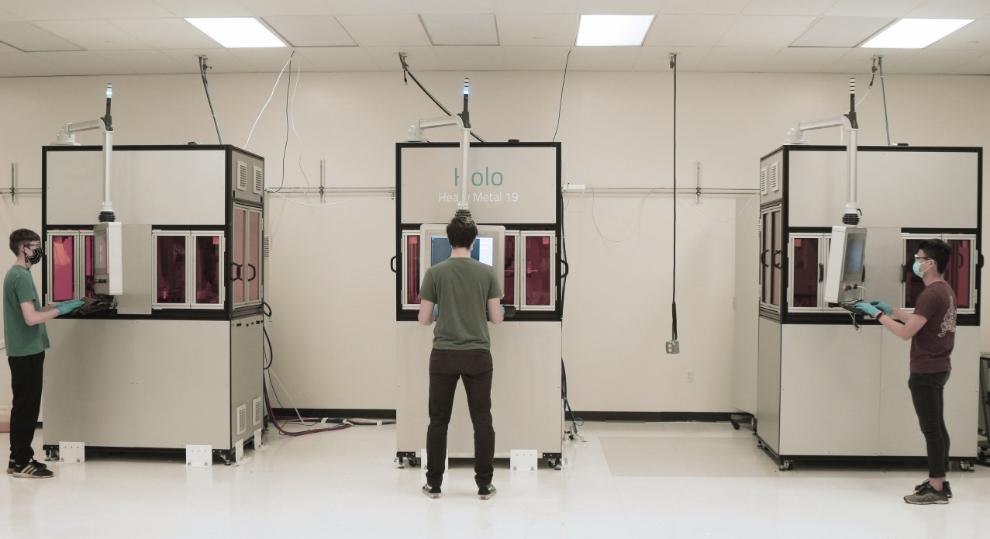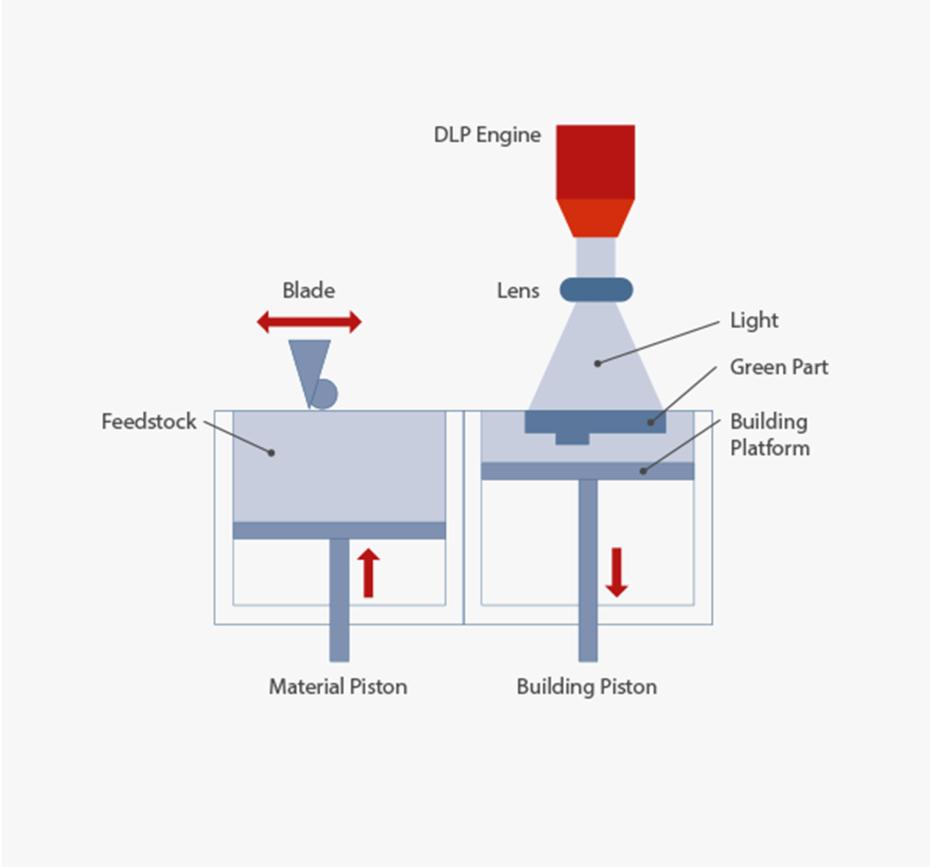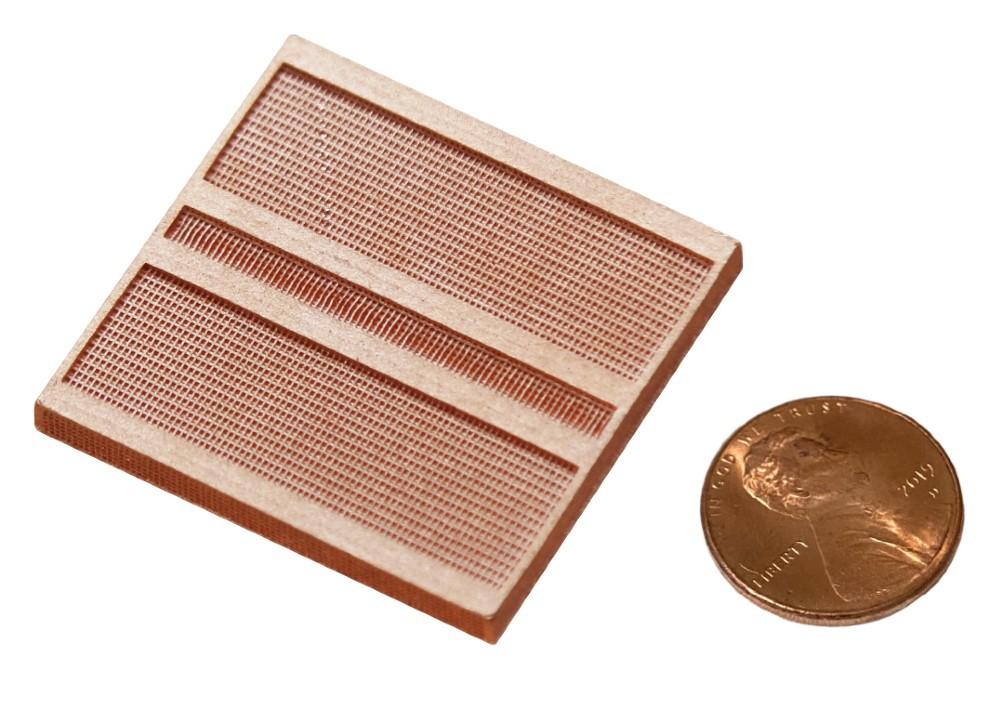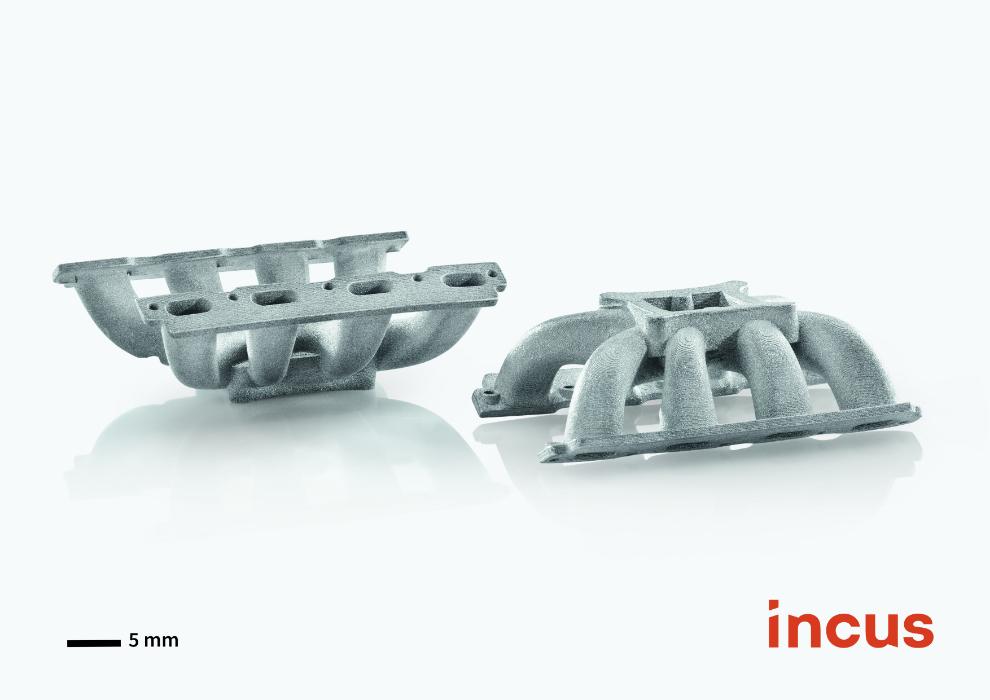- FMA
- The Fabricator
- FABTECH
- Canadian Metalworking
Our Publications
Categories
- Additive Manufacturing
- Aluminum Welding
- Arc Welding
- Assembly and Joining
- Automation and Robotics
- Bending and Forming
- Consumables
- Cutting and Weld Prep
- Electric Vehicles
- En Español
- Finishing
- Hydroforming
- Laser Cutting
- Laser Welding
- Machining
- Manufacturing Software
- Materials Handling
- Metals/Materials
- Oxyfuel Cutting
- Plasma Cutting
- Power Tools
- Punching and Other Holemaking
- Roll Forming
- Safety
- Sawing
- Shearing
- Shop Management
- Testing and Measuring
- Tube and Pipe Fabrication
- Tube and Pipe Production
- Waterjet Cutting
Industry Directory
Webcasts
Podcasts
FAB 40
Advertise
Subscribe
Account Login
Search
Two 3D printers based on lithographic technology produce microscale features
Two light-based AM systems print finely detailed metal parts
- By William Leventon
- September 21, 2020
- Article
- Additive Manufacturing

Holo produces AM parts at its newly opened pilot production line in California. Each printer builds multiple parts simultaneously for high throughput and production scalability. Holo
Though there are important differences between a pair of novel 3D printing techniques for making metal parts, both begin with lithography and end with technology similar to metal injection molding (MIM).
One comes from a firm spun off from the research and development division of Lithoz, an Austrian company specializing in ceramic additive manufacturing. Known as lithography-based metal manufacturing (LMM), this AM system for metal powders was originally conceived at Lithoz and then developed into its current commercial form by Vienna-based Incus GmbH.
LMM can be used to produce small and complex parts for a wide range of industries, including medical, automotive, aerospace, and jewelry.
The technique creates advanced metal models, prototypes, and production-volume parts using a process called photopolymerization, in which metal powder is dispersed homogeneously in a light-sensitive resin binder and then selectively polymerized a layer at a time after exposure to light from a projector.
The projector in Incus’s Hammer Lab35 printer is capable of 35-µm resolution in the X and Y axes, according to the firm’s founder and CEO, Gerald Mitteramskogler.
At room temperature, the Incus feedstock is semisolid and has a consistency similar to butter. Using a heated blade, the printer liquefies the material to spread a new layer on the previously printed one. Liquefying and spreading the feedstock in this manner helps to prevent cracks and other imperfections that can arise during the recoating process, Mitteramskogler explained.
“With our coating mechanism and high-resolution projector unit, you get surface aesthetics that are as close to metal injection molding as you can get with additive manufacturing,” he said.
Postprinting Steps
The printing process produces green parts—metal powder held together by a binder—as a block of material. The buttery feedstock supports part features, allowing them to be printed without support structures. After printing, the block is melted, leaving only the green parts.
Finally, debinding and sintering steps are needed to remove the binder and densify the metal into a solid mass. This requires users of Incus printers to have access to a sintering furnace as well as some expertise in debinding and sintering. For these reasons, Incus likes to team up with manufacturers that already use MIM.
While these companies employ MIM to meet their mass-manufacturing needs, “we provide a printing solution for prototype production or [small] lot sizes, where it makes more economic sense to 3D-print than make a mold,” Mitteramskogler said.

Lithography‐based metal manufacturing is a form of 3D printing in which metal powder is homogeneously dispersed in a light-sensitive resin and selectively polymerized by exposure to light. Incus
Besides high surface quality, he added, LMM parts offer the same mechanical properties as MIM parts because they’re made of the same metal powder and undergo similar debinding and sintering cycles.
Examples of parts printed with the technology include dental brackets featuring complex geometries and fine features; SIM-card holders, which require excellent surface quality; mobile phone cases; surgical grippers; and prototype hinges for sunglasses.
Focus on Copper
Similar in some respects to LMM is the PureForm process developed by Holo Inc., Newark, Calif. PureForm allows 3D printing of high-purity copper—an industry first, according to Holo—to produce parts with superior thermal and electrical performance.
“We started off doing stainless steel and have demonstrated the ability to print technical ceramics as well,” said Arian Aghababaie, Holo’s cofounder and chief strategy officer. “But we decided to focus on copper as our first material. We are producing ‘four nines’ (99.99% pure) copper at densities greater than 95%, which gives us the material properties we need for conductivity.”
PureForm is based on proprietary polymer binder technology that also can be used to print metals other than copper. Like LMM, this photolithographic technique uses a high-powered projector to expose and cure a photosensitive material combined with metal powder.
Eight million voxels are exposed simultaneously in a layer-by-layer building process that produces green parts, which then are chemically processed and sintered in a furnace to produce high-purity, finished components.
Holo claims PureForm achieves resolution down to 50 µm, yielding parts with extremely fine features and high surface quality. Aghababaie attributes PureForm’s high resolution to the use of digital micromirror devices that allow pixel-level control during printing, as well as the company’s material scientists, who have developed the expertise to tightly control the copper photopolymerization and sintering processes.
Instead of selling PureForm printers, Holo decided to build a pilot production line and develop in-house expertise in certain target markets to manufacture parts for customers. At present, the company is mainly focused on producing copper parts for thermal management.
‘Radical Structures’
“Aluminum, one of the main materials used for cooling, doesn’t have nearly the conductivity of copper,” Aghababaie said. “So customers come to us with thermal challenges, and we leverage 3D printing to create some pretty radical structures”—structures that cannot be made using traditional molding or machining approaches.
Such structures can be seen in the components Holo makes for liquid cooling of computer chips. Attached to chips in PCs and data centers, these “cold plates” have networks of internal channels that carry cooling fluid to improve chip performance and reduce the amount of energy needed to cool devices housing the chips.
“We designed these parts to have intricate, lattice-like internal geometries that significantly increase surface area compared to standard straight, thin heat-sink geometries,” Aghababaie said. They also allow the targeting of hot spots that arise on chips by ensuring that enough cooling fluid flows to these spots.
Other small parts that are good candidates for PureForm include those presenting air- or liquid-flow challenges in the automotive, energy, and telecommunications industries.
With full control over part design, material formulation, 3D printers, and postprocessing, Holo can make sure that everything is geared toward cost-effective, high-volume production. “We are focusing on producing tens of thousands of parts a month,” Aghababaie said.
To that end, Holo has optimized its photopolymer and feedstock chemistries to reduce exposure times to seconds per layer. In addition, Aghababaie noted, one advantage of using a projector to print is that it exposes an entire layer of parts at one time.
“Whether we’re printing one part or 20 parts, that exposure time is constant,” he said. “So we can fully leverage the build area to maximize throughput.”
About the Author

William Leventon
(609) 926-6447
About the Publication
- Podcasting
- Podcast:
- The Fabricator Podcast
- Published:
- 04/16/2024
- Running Time:
- 63:29
In this episode of The Fabricator Podcast, Caleb Chamberlain, co-founder and CEO of OSH Cut, discusses his company’s...
- Trending Articles
- Industry Events
16th Annual Safety Conference
- April 30 - May 1, 2024
- Elgin,
Pipe and Tube Conference
- May 21 - 22, 2024
- Omaha, NE
World-Class Roll Forming Workshop
- June 5 - 6, 2024
- Louisville, KY
Advanced Laser Application Workshop
- June 25 - 27, 2024
- Novi, MI




























